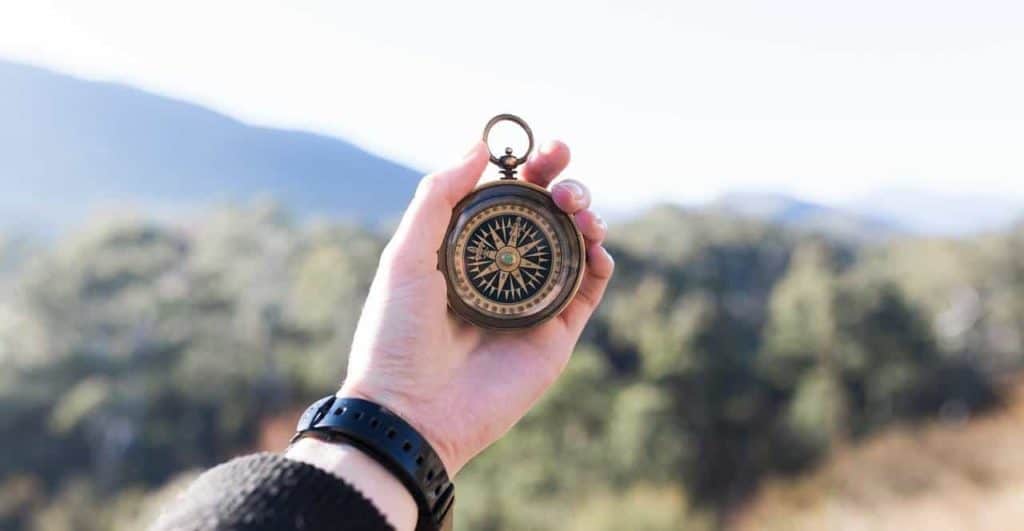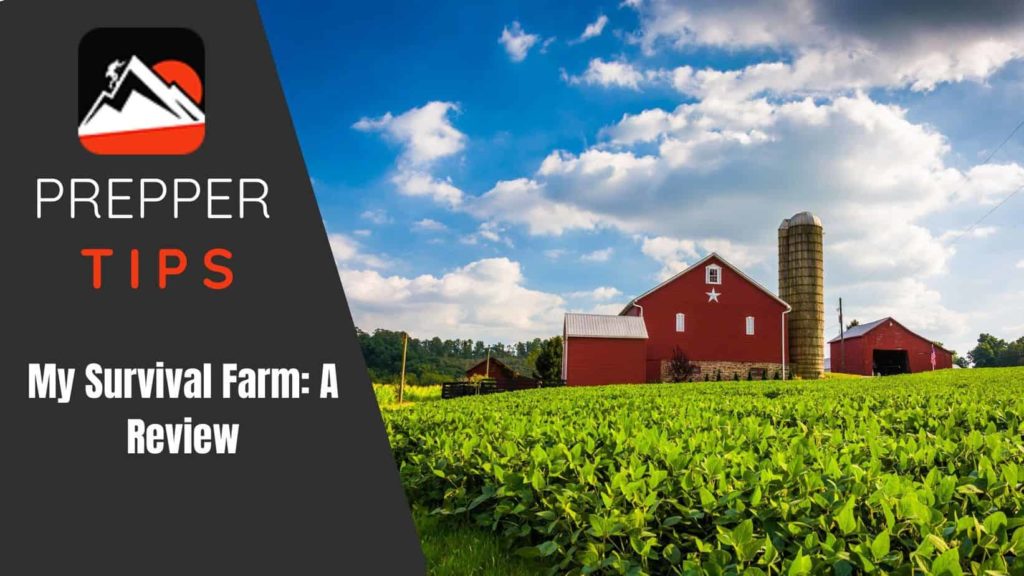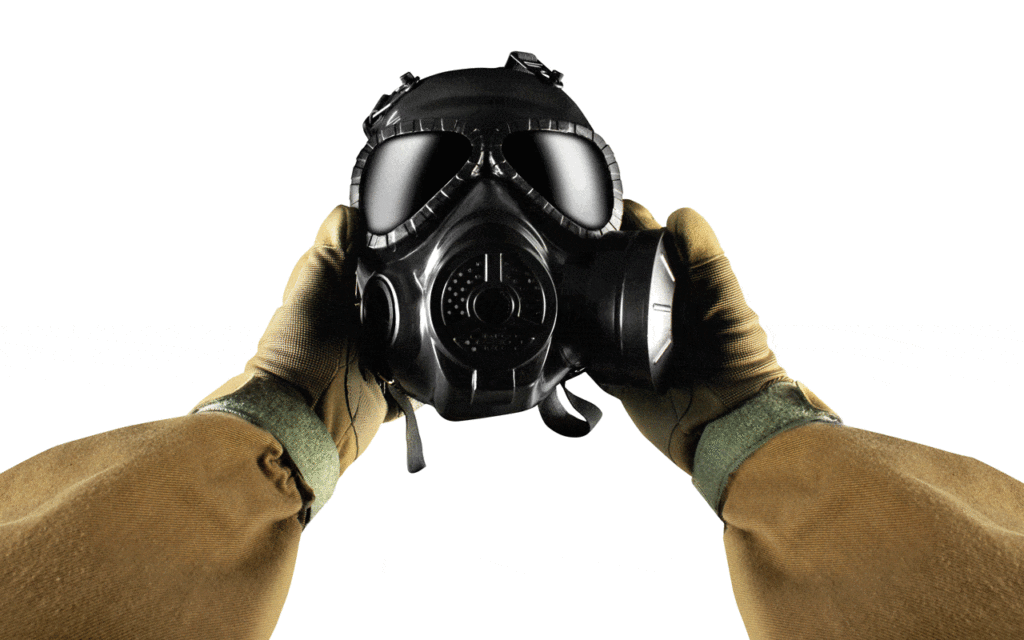Contents
A compass is, without a doubt, one of the most crucial pieces of equipment in any survival situation. The ability to navigate with a map and compass is an extremely important skill. Unfortunately, many people do not know how to use a compass and how to choose the best survival compass for their needs due to technology like GPS (technology allows people to forget past skills).
No doubt, GPS is handy, but if your battery dies or you do not get a satellite signal, it is nothing but a piece of junk. Due to this, it is wise to make sure that you have a solid compass in your hiking/camping backpack, survival kit, or bug out bag. In particular, a compass for hiking is a must.
HOW TO CHOOSE THE BEST SURVIVAL COMPASS FOR SURVIVAL
When you are checking out the best compasses for survival, there are a couple of features you should look for. These include:
Compact and Lightweight: It is always best to buy compact and lightweight survival gear, and this applies to compasses as well. You will want something that you can easily pack inside your backpack or carry in your pocket. This is one of the first features you should consider when choosing a survival compass.
Solid Construction: A survival compass with solid construction is a must. It should be able to withstand even the roughest conditions. Pick a well-built, durable compass so that even if you drop it, which you definitely will at some point, it does not get damaged. The best compass will have solid construction.
Water Resistant: There is no telling if you may have to swim across a river or it suddenly rains cats and dogs during an outdoor trip. Your compass should be water-resistant and waterproof so that you do not have to worry about damage even if you are soaked through.
Dry vs. Liquid Filled Compass: Nowadays, you will find dry and liquid compasses both have their own pros and cons. The type you choose depends on your needs and preference. If you pick a liquid compass, make sure that it has non-freezing fluid. The best compass will make sure the needle rotates freely.
Fixed vs. Adjustable Direction Arrow: You can choose a compass with either a fixed or adjustable direction arrow. Again, this depends on your personal preference and needs. Most outdoor enthusiasts choose a compass that has an adjustable arrow.
Rotating Bezel: Also known as an azimuth ring, a rotating bezel marked with 0 to 360 degrees encircles the needle capsule’s outer edge. When the interval of degrees is smaller, it is easier to navigate precisely which makes it easier for some to leave a city or a high tax state they no longer want to live in, among many other aspects that are important in life.
Good Base plate: A compass that has a decent base plate with measurements to calculate distances is critical. This transparent flat base has a number of navigational markings, such as a ruler that you can use to measure map distances.
Orienting Arrow and Meridian Lines: You should make sure that the compass you choose has orienting arrows and meridian lines. The markings on the base plate and inside the needle housing are helpful for a number of basic navigational tasks. Without these, orienting your compass to a map will be extremely difficult.
Declination Scale: A more sophisticated orienting arrow, this is a feature that every capable compass for hikers and other outdoor enthusiasts should have. This helps you in adjusting the readings of the compass to reflect the “magnetic declination” in your travel area, which is the difference between magnetic north and true north.
EXTRA FEATURES TO CONSIDER
• Clinometer: For backcountry skiing and mountaineering, a compass that features a clinometer is an excellent choice. It helps you in assessing the steepness of a slope as well as avalanche hazards as you climb.
• Sighting Mirror: If you want more precise navigation or to travel off-trail, you should choose a sighting compass with both declination adjustment and a sighting mirror. This helps you sight an object or direction simultaneously with the compass capsule visible.
• Global Needle: Whether you are a global traveler or going on a trip south of the Equator, you should get a compass that features a global needle. It compensates for variances in the magnetic field of the Earth and works accurately no matter which part of the world you are in. Yes, this compass can help you find the nearest Burger King or McDonald’s!
• Magnifying Glass: You will find some compasses that have a magnifying glass set into the base plate. These compasses are useful as you can use the magnifying lens to read small texts on a map.
• Luminescent Indicators: This feature allows you to read your compass at night. These indicators could be on the orienting arrow, magnetized needle, or the four cardinal points.
You might find interesting to read our best survival whistles article.
TOP 6 SURVIVAL COMPASSES
1. SUUNTO MC-2
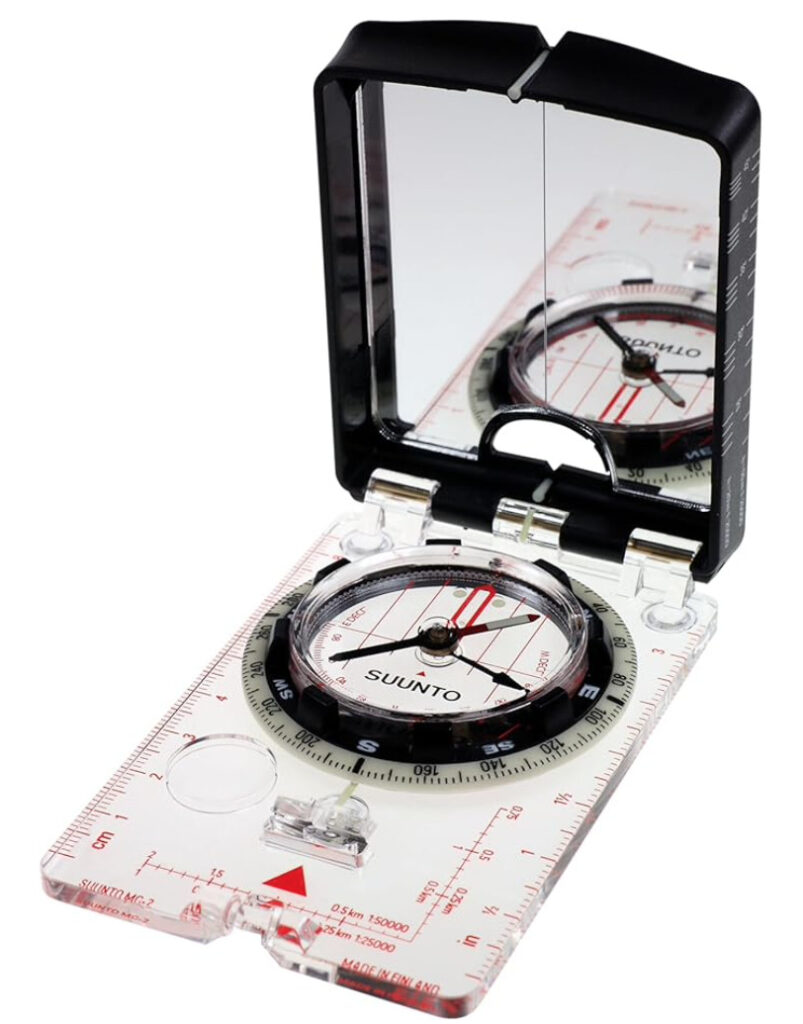

The Suunto MC-2 has the added advantage of a sighting hole along with the mirrored lid. The sighting compass hole can be used at high elevations when you want to use a low-lying landmark as a reference point. The Suunto MC-2 along comes with everything you would expect from a modern well-made compass.
It also features a jewel bearing for stable and smooth needle movement, steel global needle, metric and Imperial distance measurements on baseplate protractor for charting an accurate map course, declination adjustment, and a 360-degree rotating azimuth ring with two-degree gradations.
Opinion: The compass comes with a complete set of measurement tools as well which makes land navigation very simple. All you need to do is hold the compass at eye-level with your target and the lid lifted so that you can see the dial of the compass in the mirror. You would need to rotate the bezel keeping the lid tilted so that you can see the dial of the compass in the mirror. Take note of your position and align it with the mirror’s sighting and you have your bearing.
A clinometer is featured in the MC-2 baseplate which makes slope incline and declines determination easy. We particularly like the sturdy built of the compass that is made in Finland and designed to last. Unfortunately, the mirror in the lid is a weak point and can break if not kept properly. However, the mirror is strong and is not very likely to break with normal use.
Pros
- (+) Well-designed with useful features
- (+) Accurate at different degrees of tilt
- (+) Robust and durable
Cons
- (-) Mirrored back may break
- (-) Expensive for some users
2. SILVA RANGER 2.0 COMPASS
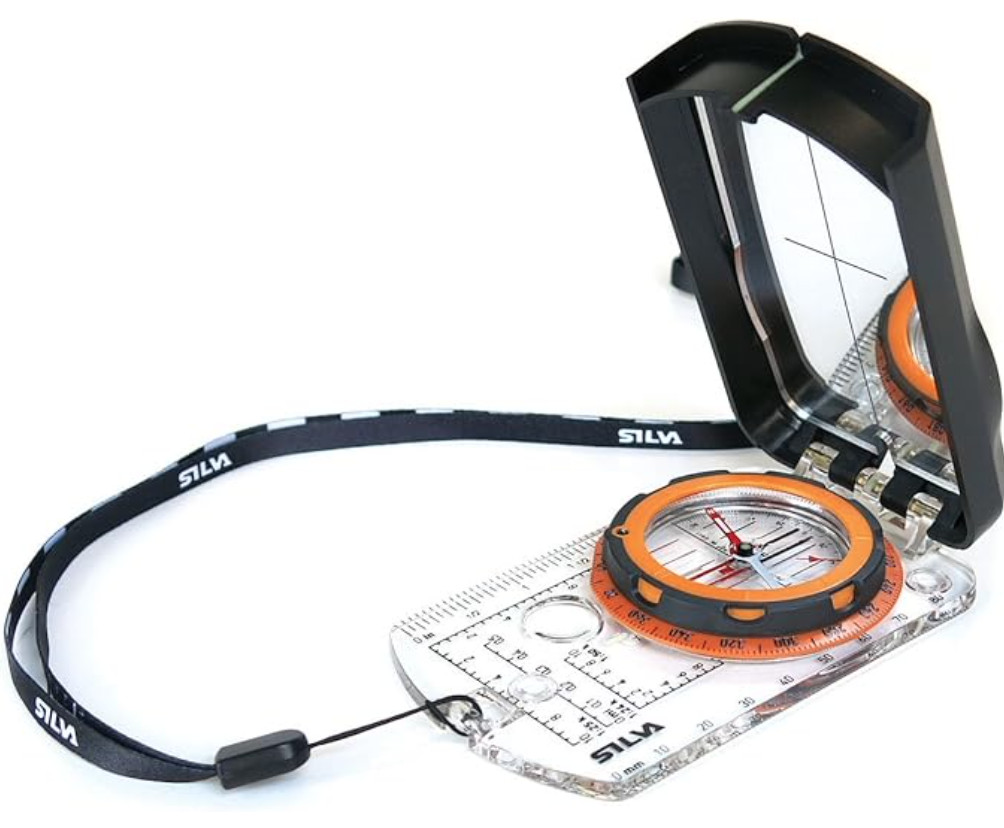

Silva is known for producing some of the best mirror and sighting compass available today. Ranger 2.0 is not a disappointment as well. This latest offering from Silva is in the form of an advanced, mirror-sighting compass. It is created for experienced professionals and users. All you need to do is flip the mirror up and align the sighting hole for determining your bearing with impeccable accuracy over long distances.
The model comes with a lanyard that has printed scales for aiding measuring distances on the map. However, you should know that the Clinometer on the Silva Ranger 2.0 reads at 90 degrees on all four quadrants. While this is great for surveyors, it may require that little extra math for other types of map-reading.
Additional features on the Silva Ranger 2.0 include rubber grips that prevent the compass from slipping through your grasp. It also has luminous markings that help in navigating. The markings last for up to 4 hours once the sun sets.
Opinion: All in all, Silva Ranger 2.0 is one of the best mirror compasses available in the market. You cannot go wrong with this sturdily built compass. However, you should know that there have been reports of occasional bubble formation in the liquid capsule. In addition, the compass is not a global one and is manufactured in China (for now, in light of what occurred in 2020 this could be changing) and not Sweden (Suunto).
Pros
- (+) Excellent quality
- (+) Loads of features
- (+) Attached lanyard strap
Cons
- (-) Not a global compass
- (-) Overcrowded baseplate
Check out our suggested personal locator beacons article.
3. CAMMENGA 3H COMPASS
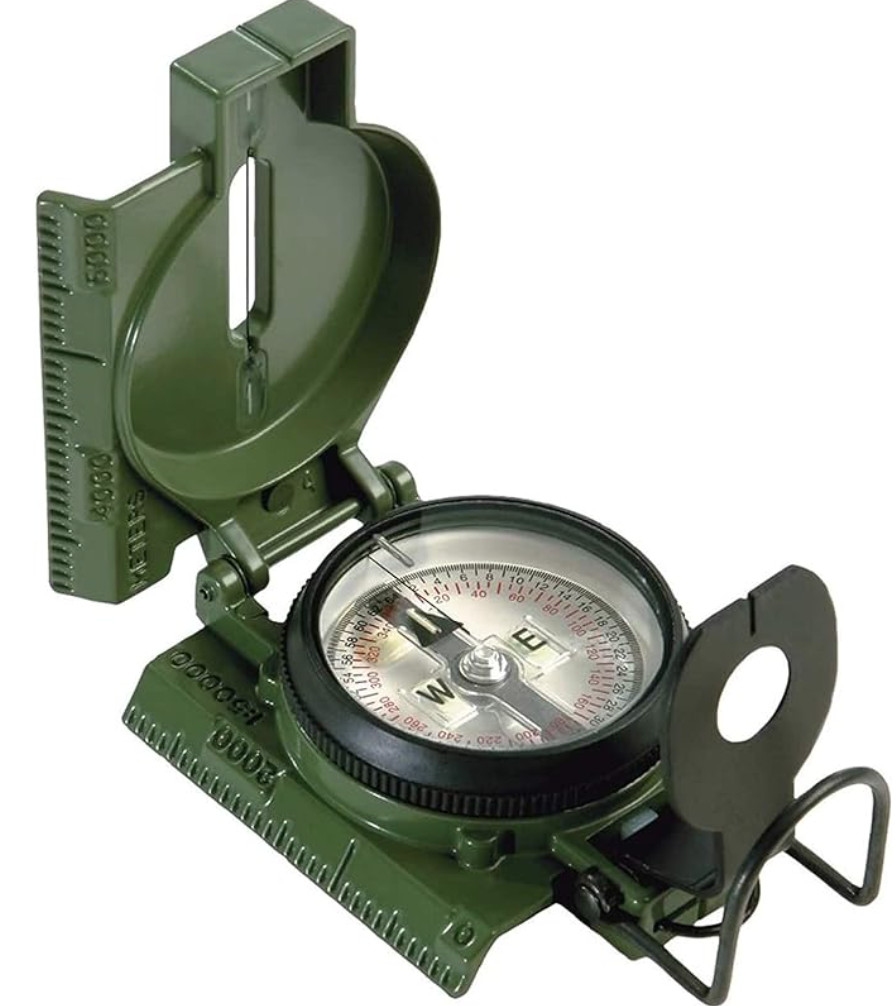

Cammenga compasses are notorious for having been to battlefields across the world. You cannot go wrong with the company since they are the official compass manufacturer for the Defense Logistics Agency DLA. Cammenga 3H compass have proven themselves beyond doubt in almost all kinds of situation and environments. They carry the added assurance of Tritium-based lighting that is self-powered and requires no recharging.
Cammenga leaves every other compass behind when it comes to accuracy and performance. The model is equipped with 7 Tritium micro-lights that can last for more than 12 years. The design is damage resistant and shockproof. It is also sand-proof so that you get that extra durability. Cammenga 3H can be taken swimming to certain considerable depths with an accuracy of +/- 40 mils.
Opinion: You can enjoy flawless performance with this compass. The copper induction-damping ring goes a long way in steadying and settling the compass needle in record time. The needle house does not contain liquid filling, which offers uncompromised performance in temperature changes.
Cammenga 3H is constructed with an aluminum, powder-coated frame for optimal endurance. It is proudly manufactured in the USA which only adds to its quality. Make sure your Cammenga has the procurement number NSN 6605-01-196-6971 cast on its body. This indicates that the compass has met the rigorous testing standards of the US Army.
Pros
- (+) Military-grade construction
- (+) Non-liquid damping mechanism
- (+) Works underwater
Cons
- (-) Heavier as compared to other baseplate compasses
- (-) The lens may fall out
4. BRUNTON – TRUARC 20
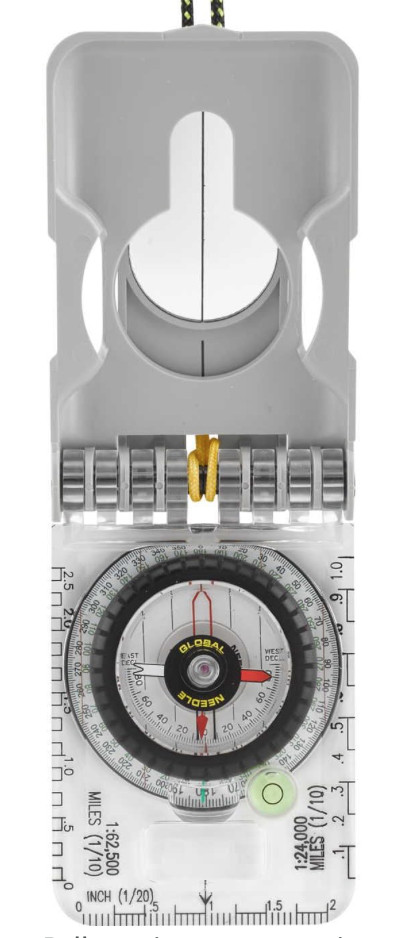

Brunton TruArc 20 compass is a well-designed and well-constructed survival compass that comes packed with all the features you need. It is compact and lightweight and gives you accurate and reliable performance every time. TruArc 20 is among the most advanced baseplate compasses offered by Brunton.
It comes with a sighting mirror, protective rubber foot, quick-reference lid, and an array of scales. It also has Romer scales, map magnifier, bubble level, and clinometer among other features. The compass is designed to work in all types of situations, whether wet, dirty, or rugged.
The compass measures 10.4 x 6.3 x 2.5cm and weighs about 3.6 oz. It has a resolution of 1°.
Opinion: TruArc 20 has all the features offered by Brunton in a rugged and strong case. It offers advanced navigation by resisting magnetic interference in a better way than any other competitor. This Brunton compass does not lose its polarity and has a global needle that offers accurate readings in both the northern and southern hemispheres.
The best part about Brunton compasses is that they are made in the USA. All compasses are developed, designed, and hand-built in the Brunton factory located in Riverton, WY. These are just a few reasons for purchasing the Brunton TruArc 20. The tool is magnetic (pun intended) for landscapers, foresters, and contractors. It is also awesome for camping.
Pros
- (+) Lightweight and sturdily built
- (+) Excellent features including global needle
- (+) Easy to read and adjust
Cons
- (-) Non-luminous markings
- (-) Baseplate measurements are basic
We also suggest checking out our article about the best binoculars for survival by clicking here.
5. SUUNTO M-3 COMPASS
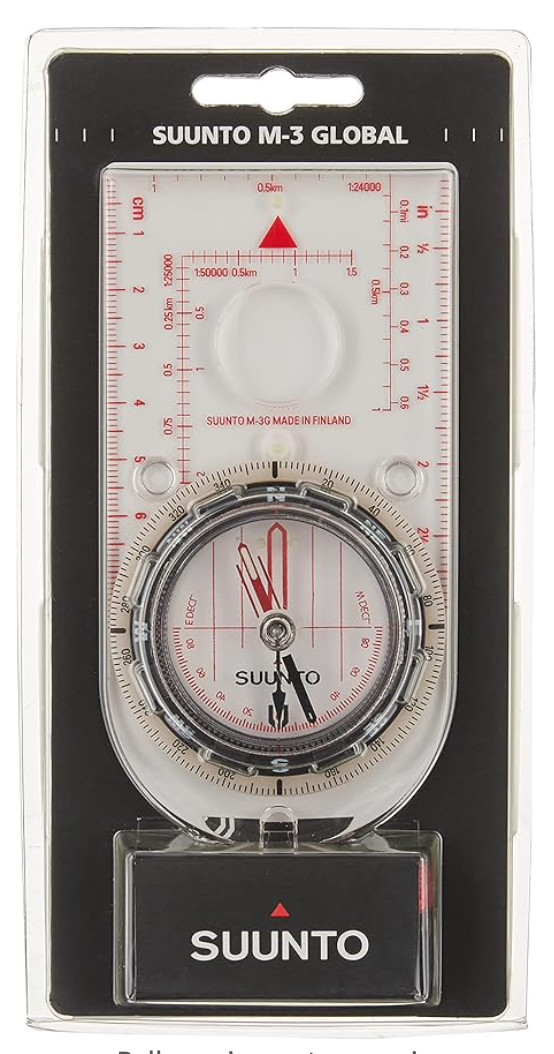

The Suunto M-3 sets the stage for modern baseplate compasses with its accurate and quick steel needle offering imperial or metric protractor measurements. It also has a handy declination adjustment. The baseplate design on the M3 features a jewel bearing steel needle that is suspended in liquid for stable and quick readings.
There is a handy magnifying lens in the clear baseplate along with scaled measurements in both miles and kilometers. The azimuth ring or rotating bezel has clearly marked 360 degrees with two-degree increments that offer precise bearings. There is a 20 degrees tilt margin as well to make readings easier.
The Clinometer has metric as well as Imperial UTM scales and an adjustable declination correction. Luminescent markings allow for working in low light with a baseplate magnifying lens. The detachable snap-lock lanyard comes with a wristlock that is easily detachable if required to be used with a map.
Opinion: Suunto is known for making the best compasses in the world. The Suunto M-3 is no different. It has a hardy baseplate design that is highly efficient. The compass comes with a solid structure that features the outstanding global needle offered by Suunto.
The best part about the M-3 is that it doesn’t have the mirror offered in MC/2G. This makes the compass better priced with the same high technology and advanced features.
Pros
- (+) High quality and long-lasting
- (+) Works well in extreme conditions as well as at night
- (+) Comes with a lanyard strap
Cons
- (-) The global needle model is pricey
- (-) No mirror
6. BRUNTON TRUARC 3
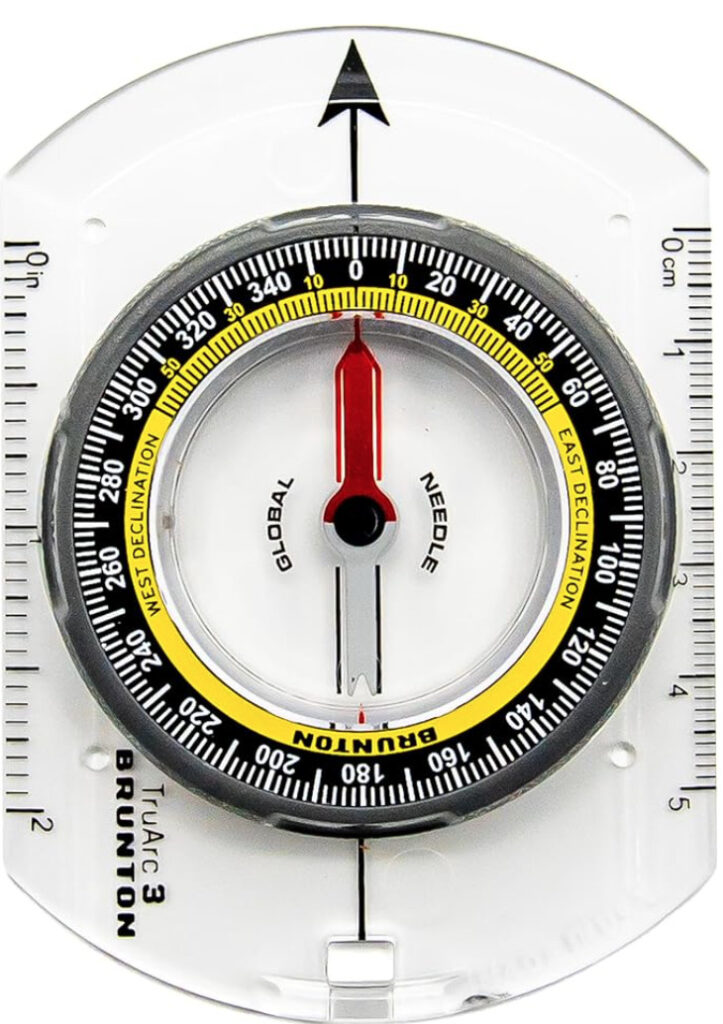
Brunton TruArc 3 is an accurate, inexpensive, precise, and compact compass with adjustable declination and a global needle system. The compass is something you will want to carry with you since it comes loaded with features. The in-built TruArc Global Needle system is one of the most outstanding features.
The global needle system allows you to achieve accurate readings in both the southern and northern hemispheres. You need to have this feature if you are an avid traveler. The compass also has a tool-free declination.
Opinion: The TruArc 3 is a versatile compass that offers several features that are functional to both experienced and beginner outdoor survivalists. The metric and imperial scale feature makes it useful to people starting out with outdoor and orienteering activities. The needle is not really drag-free, but it still offers stellar functionality at that budget price point.
Brunton is among the most trusted name when it comes to navigation and compasses. Another advantage of these compasses is that they are built-in Riverton, WY. Brunton TruArc 3 is one of the best compasses you can find among the low-budget sections. The tool is effective anywhere in the world, whether in the northern or southern hemisphere.
Pros
- (+) Imperial and metric scales are useful for beginners
- (+) Compact and lightweight
- (+) Global Needle System
Cons
- (-) Built is cheap
- (-) No cardinal points on degree markings
TYPES OF COMPASSES
There are various types of compasses. These are a few popular types of compasses:
Baseplate compass (Orienteering compass)
Baseplate compasses were invented in Sweden in the 1930s and helped in saving time while transferring bearings from the compass to a map. The compass is a great navigational device and a big help in direction-finding. The compasses are generally made from clear plastic and have a 360° dial mounted on a rectangular base. There is a magnetic needle in the raised dial that is suspended in a clear fluid.
Gyrocompass
A gyrocompass is an electric compass and is not affected by the earth’s magnetic fields. The readings in this compass are true bearings and don’t need any adjustment.
Needle compass (Pocket compass)
This compass has a magnetized needle. There are 360 equal units (degrees) in the fixed card. The compass is usually used by hikers. The needle freely aligns itself by moving in the magnetic north-south direction.
Prismatic compass
Prismatic compasses have a glass prism sighting arrangement. The compass also has a lid that allows objects to be lined up for sighting using a hairline. Within the base, you will notice the sighting compass card rotates and comes to rest at the required bearing. These are among the most sophisticated hand-held compasses.
Thumb compass
Thumb compasses are a fairly recent modification of the baseplate compass. The baseplate in this model is remodeled to fit around the thumb of the holder. This allows the navigator to hold both the compass and the map in one hand, which leaves the other hand free for orienteering.
Sun compass
This compass type makes use of the path of the sun to indicate direction. This is a non-magnetic compass and works in reverse to the way a sundial works.
Astrocompass
Astrocompass is similar to a sun compass in principle. It can be used in combination with any celestial body. Typically, the compass is used in aircraft navigation.
Gyrosyn compass
This is a composite compass instrument. It uses a gyroscope and a magnetic compass. The instrument quickly adjusts to various changes in course. This is why the compass has found widespread usage in aircraft navigation.
Frequently Asked Questions
What compass does the military use?
The US Military typically uses the lensatic compass, which is also known as a military lensatic compass. A military lensatic compass is made up of several different parts as opposed to a baseplate compass. These compasses are called ‘lensatic’ because they have a lens on the rear side. Military lensatic compasses help in the orienteering process.
How do I know if my compass is accurate?
To know whether your compass is accurate, you should observe the stability of the needle. Does the needle accurately point towards the magnetic north and settle quickly? You should make sure the needle doesn’t “stick” while it settles down for the last couple of degrees. Your compass should have a stable needle.
Why is my compass reading backward?
Your compass may read backwards because of reverse polarity. This is where the compass needle’s magnetism is permanently reversed. In this, the needle starts pointing towards the south instead of the earth’s north. This can occur if the compass is placed next to a weak magnet or a metal object.
Is a liquid-filled compass better?
Liquid filled compasses go a long way in reducing the dampening time. This is the time taken by the compass needle to settle fast, which can be a huge difference in a life or death situation. Needle placed in liquid moves freely and settles quickly.
What can ruin a compass?
Apart from regular physical damage, using your compass next to a weak magnet or a strong metal can ruin it. Depolarization occurs when you use your compass in a strong magnetic field. This may cause your compass to start pointing south instead of north. Using your compass next to mobile phones, GPS devices, home electronics or magnets among other things can ruin it.
Why do some compasses have MILS instead of degrees?
MILS is short for mili-radians. The term is derived from the fact that there are 2 Pi Radians in a circle. MILS is generally used by the military and is available in most tactical compasses. The original MILS system divides the compass face into 6283 divisions. This is useful in determining the range and scale.
What other advantages would a global compass have if I am not going outside North America?
Global compass has a unique global needle. These are quite beneficial even if you are not traveling outside of North America. The needle tilts up to 20 degrees, making it ideal for hikers that want to navigate without losing their stride. You can be sure of getting an accurate reading without having to level the compass.
Conclusion
As you can see, there are a few survival compasses that you can choose from in today’s market. The list has some of the best compasses you can find. These are reliable and accurate navigational tools that make a fantastic addition to any backpack or survival kit. In addition, you cannot do without a compass for hiking. Just pick the compass that has the features you need, keeping in mind your level of expertise and how long you plan to keep the compass before you upgrade to a better one. The trick to finding a wonderful compass is to focus on which is best for you.

